Diving in Komodo National Park
In this day and age finding a natural environment that's still largely untouched and fiercely protected is rare. In many areas of Indonesia, where tourism has come in and stamped its ownership over everything, it’s a struggle to find the beauty of Mother Nature by herself. However, there is one place I have found where you can immerse yourself in the glory of nature, both above and below the sea.
In the centre of the Indonesian archipelago, between Flores and Subawa island you’ll find one of the 7 Natural Wonders of the World, Komodo National Park. A UNESCO World Heritage Site since 1986, the park was first established to protect the unique Komodo dragon but over the years has expanded to protect its entire natural biodiversity both on land and sea. With one of the richest marine environments in the world it offers world class diving that will truly take your breath away. The best way to experience the underwater world of Komodo National Park is to go on a liveaboard dive trip. These start from one-night trips and can go as long as nineteen days! As it was my first liveaboard experience, I chose a four-day trip to test the waters (pun totally intended) and my stamina.
I started my journey from Bali, where I flew to the tiny town of Labuan Bajo, located on the western end of Flores Island. A far cry from busy and overcrowded Bali, Labuan Bajo is the small tourist hub of the island where the main street consists of dive shops, half built buildings and restaurants. As most people spend their days on the water, the town is quiet during the day but livens up at night. The sunsets can be unreal here so head to a rooftop bar like Le Pirate or Paradise Bar for the best views.
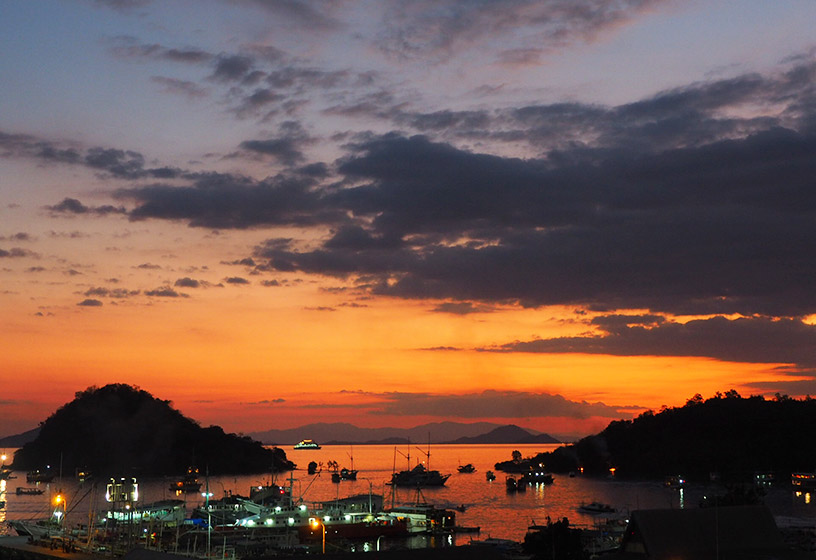
Sunset in Labuan Bajo.
Our dive trip left in the afternoon, and as the boat sailed to the north of the national park where we would spend the first night, we acquainted ourselves with our new home for the next four days. I’d had my initial doubts about liveaboards - What would the food be like? Were the rooms all shared? What's the bathroom situation? I was pleasantly surprised with all the living conditions and every single meal was delicious and came in huge portions (diving does work up an appetite!).
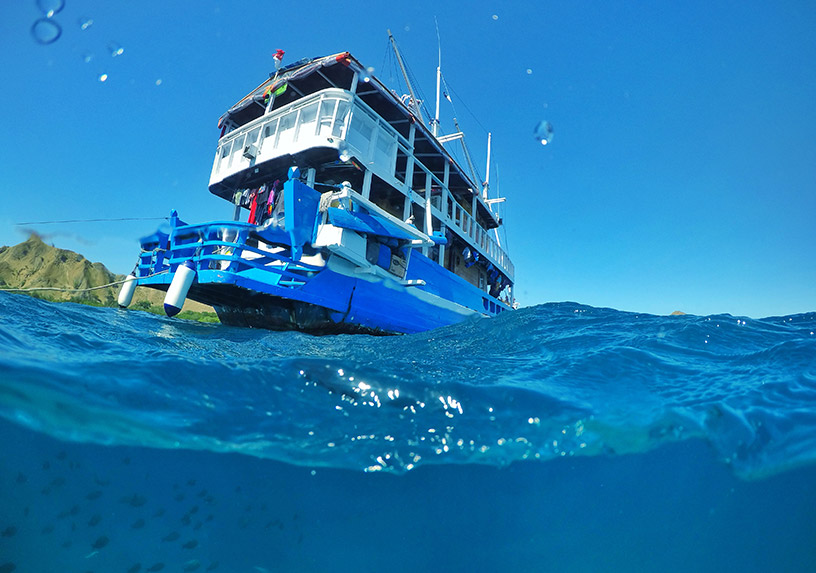
The diving was nothing short of phenomenal. Imagine a live action remake of Finding Nemo and you’ll get the idea. I’d been diving before but this was something else. On every dive we were amongst hundreds of fish of all sizes, colourful coral and crustaceans. One dive site in particular, Batu Balong is nicknamed the “Aquarium” because of the mass of fish in the site. Some dives were were graced by the presence of giant manta rays, sharks and turtles. On the two night dives we did, the nocturnal creatures came out to play and at one point we covered our torches to encourage the bioluminescence to sparkle in the dark water. It was almost overwhelming being amongst so many sea animals and we came up from every dive grinning from ear to ear.
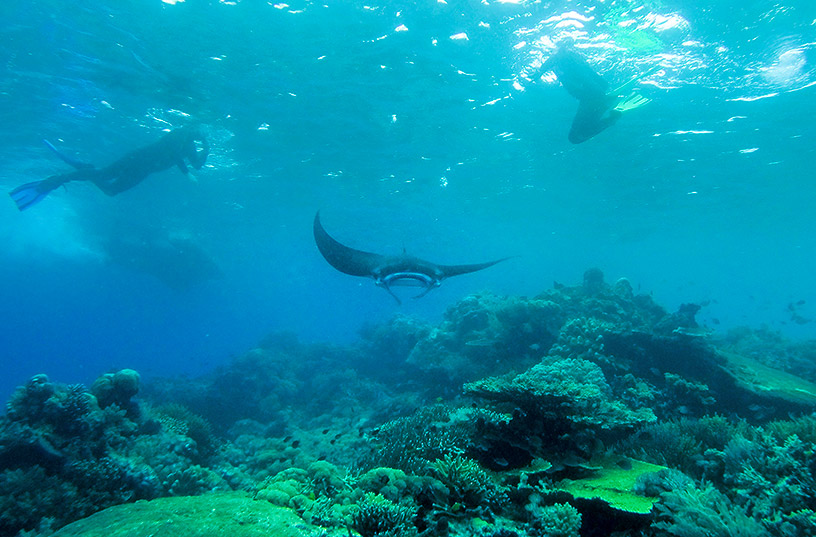
Getting accustomed to liveaboard life was pretty easy. We woke up with sun and whenever we weren’t underwater, we were eating or sun-baking on the roof of the boat. One afternoon we moored the boat and hiked up one of the islands for a beautiful view of the sunset. From here we could see out for miles and watched as the sun set below the Flores Sea. A couple of boats were floating in the distance but apart from that, we were the only ones around. It was a refreshing change from the hordes of tourists in Bali and heart-warming to see the locals proud of their beautiful National Park.
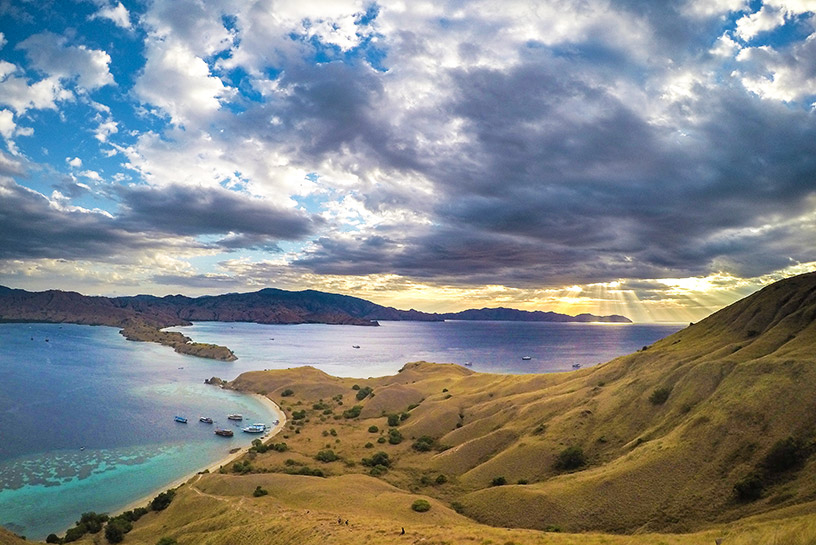
On our final day we stopped at Rinca Island to witness the elusive Komodo dragon. As the largest living lizard in the world, with a poisonous bite that slowly releases bacteria over several days, our group ensured we stayed close to our guides as we walked amongst them. Though as scary as they were on paper, these dragons seemed happier snoozing in the sun than paying attention to us humans.
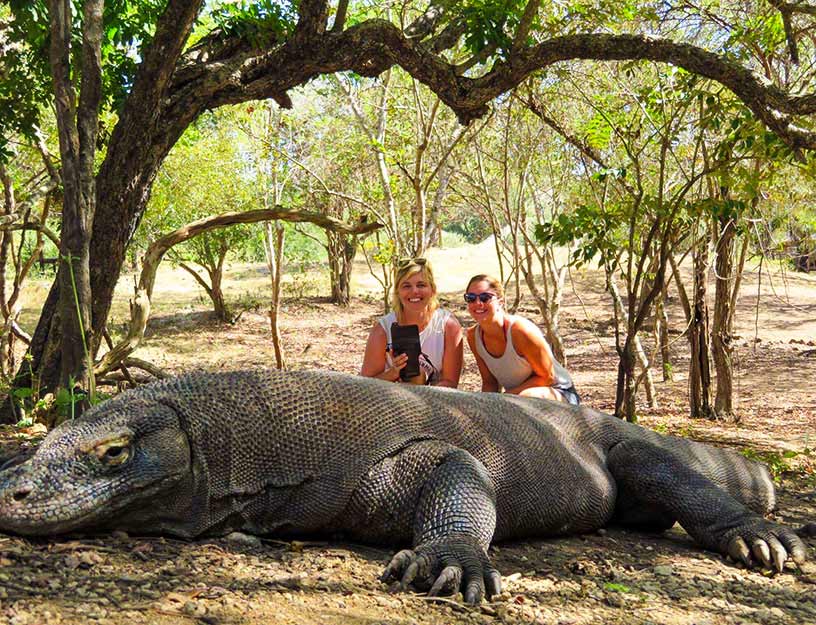
We hiked to a high point on Rinca and looked out at the stunning view. It was an excellent way to finish the trip. The four days had flown by in a blur of salty water, colourful creatures and lots of sun. I was already planning my next trip to go on a longer liveaboard because four days just wasn’t enough. Komodo National Park had captured a bit of my heart and I am itching to return.
Things to Know
- I went with Wicked Diving who were professional and friendly but put safety first. The team was all Indonesian and they were fantastic! Highly recommended. You can book ahead for certain dates however if you happen to find yourself in the area, many dive shops advertise spaces on their liveaboard trips leaving in the next few days.
- Alternatively, if you don’t want to do a liveaboard, day trips are available to book in Labuan Bajo. Though after one day diving, you won’t want to stop!
- Flights to Labuan Bajo can be unreliable. Delays are almost inevitable and cancelled flights are quite regular. Garuda Indonesia is your best bet if you’re on a tight schedule.
- Diving isn’t all there is to do here. Take a trip to Komodo Island to see the Komodo Dragons, visit the Pink Beach and hike up to Padar Island for a truly unique view of the National Park. Snorkelling is also really popular and there are plenty of great spots to visit.
Jess Buchan is an Aussie travel blogger who has lived in Europe and loves to share her travel stories on her blog, Instagram @ablondeandherpassport and Twitter @ablondeandher.
The views, opinions and positions expressed by the author and those providing comments are theirs alone, and are meant as travel inspiration only. They do not reflect the opinions of Cover-More Insurance. You should always read the PDS available from your travel insurance provider to understand the limits, exclusions and conditions of your policy and to ensure any activities you undertake are covered by your policy.
Planning a trip?
Discover Our COVID-19 Cover
To find out what our current* benefits do – and don’t – cover, please read:
Plus, for helpful destination-based COVID-19 information, don't forget to check the COVID-19 Travel Risk Tool before and during travel.
*The cover information contained on the above pages refers to Cover-More policies sold on or after 26 June 2023. For cover information on policies sold prior to this date, please read the relevant PDS.